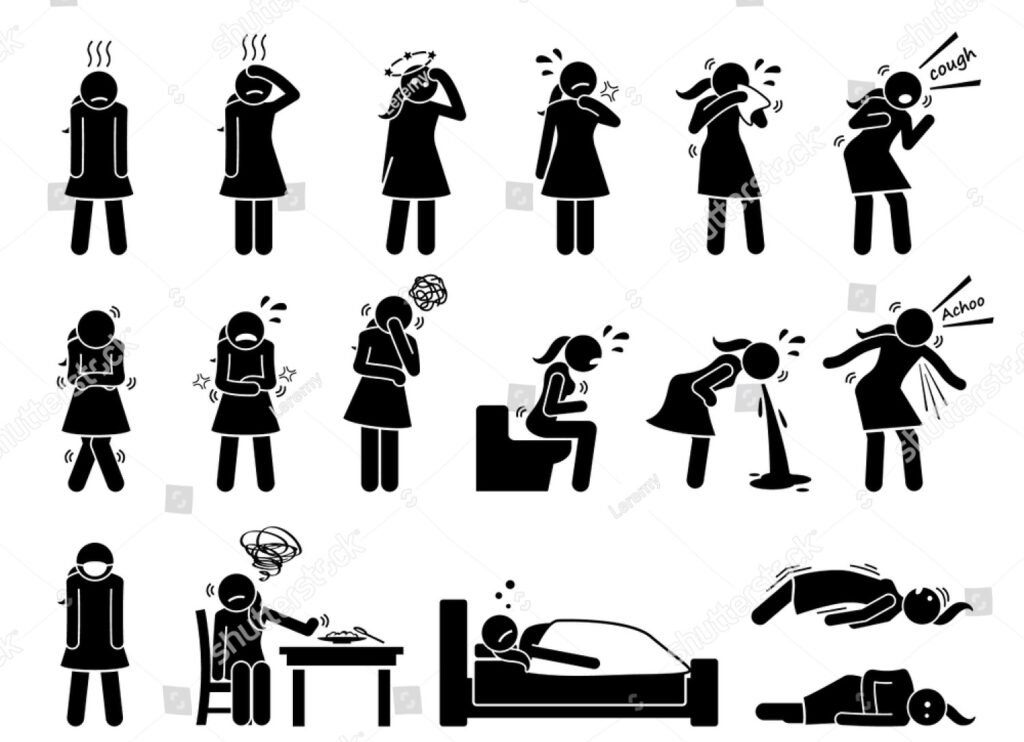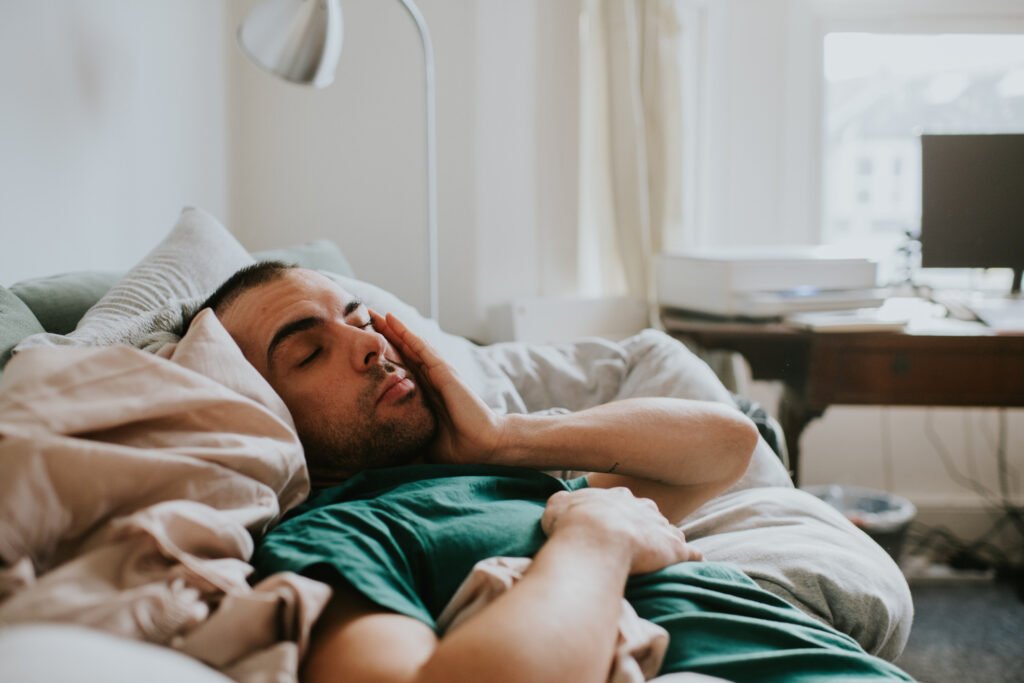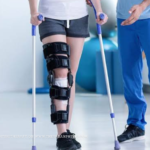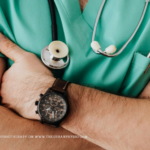Your reports say you’re fine—but your body tells a different story.
The fever’s gone. The cough has cleared. Your doctor says the infection has run its course. You’re officially “recovered.”
So why do you still feel exhausted after climbing a flight of stairs? Why does a simple grocery run leave you needing a two-hour nap? Why does your body feel heavy, weak, like you’re dragging yourself through mud?
You’re not imagining it. And you’re definitely not alone.
Here’s what nobody warns you about: beating the virus is only half the battle. The real challenge is rebuilding what the illness took from you.
And here’s the part that should worry you: skipping post-recovery rehab means risking chronic fatigue for months—possibly longer.
The good news? With the right approach, you can reclaim your strength, energy, and life. But you need to stop waiting for it to magically return on its own.
The Hidden Aftermath of Viral Illness
When you’re sick with a viral infection—whether it’s COVID-19, influenza, dengue, or any other serious illness—your body goes into survival mode. Every system prioritizes fighting the infection, and everything else takes a backseat.
But the damage doesn’t end when the virus clears.
What Really Happens During and After Illness
Muscle Loss Happens Fast
When you’re bedridden or severely inactive, your muscles begin to atrophy within days. You can lose up to 5% of your muscle mass per week of bed rest. A two-week illness can cost you 10% of your muscle strength—and it takes far longer to rebuild than it took to lose.
Your Cardiovascular System Deconditions
Extended periods of rest weaken your heart’s efficiency and reduce your blood volume. This is why simple activities suddenly feel like marathons. Your cardiovascular fitness has literally regressed.
Energy Production Systems Malfunction
Viral infections can damage the mitochondria—the power plants in your cells. When these are impaired, your body struggles to produce energy efficiently, leaving you chronically exhausted even when you’re “rested.”
Inflammation Lingers
Even after the virus is gone, inflammatory markers can remain elevated for weeks or months. This ongoing inflammation contributes to fatigue, muscle weakness, and that general feeling of unwellness.
Breathing Patterns Change
Many viral illnesses, especially respiratory ones, alter how you breathe. You might develop shallow breathing patterns, reduced lung capacity, or rely too heavily on accessory breathing muscles, leading to neck and shoulder tension.
Postural Changes Develop
When you’re weak and fatigued, your body compensates. You might develop a forward head posture, rounded shoulders, or an inability to maintain upright positions for long periods. Left uncorrected, these become permanent.
Your Nervous System Gets Dysregulated
Severe illness can disrupt your autonomic nervous system, causing issues with heart rate regulation, blood pressure control, temperature regulation, and digestive function.
The result? You’re left in a state of deconditioning that your doctor’s tests don’t capture. Blood work might look normal, but you feel anything but normal.
Why “Just Rest” Isn’t the Answer
When you’re feeling weak after an illness, the natural instinct is to rest more. And during the acute phase of illness, rest is exactly what you need.
But there’s a critical point where continued rest becomes the problem, not the solution.
The Deconditioning Spiral
Too much rest creates a vicious cycle:
You feel weak, so you rest more. But extended rest makes you weaker. Then even small activities feel overwhelming, so you rest even more. Your weakness deepens. Your stamina decreases. Your confidence erodes.
Before you know it, you’re trapped in a cycle of deconditioning that’s incredibly difficult to break without structured help.
This is where most people get stuck.
They wait for strength to return spontaneously. They push themselves too hard and crash. They give up on activities they love. They accept fatigue as their “new normal.”
None of this is necessary.
Post-Viral Weakness: Not Just COVID
While COVID-19 has brought post-viral fatigue into the spotlight—with millions experiencing “long COVID”—post-viral weakness isn’t new and isn’t exclusive to coronavirus.

Many viral infections can leave lasting effects:
Influenza can cause fatigue and weakness lasting weeks or months, especially in severe cases.
Dengue fever often leaves people with profound post-viral fatigue that can persist for months.
Epstein-Barr virus (mono) is notorious for causing extended periods of exhaustion and weakness.
Chikungunya commonly results in joint pain and fatigue that lingers long after the infection clears.
Pneumonia (viral or bacterial) significantly impacts respiratory function and overall strength.
The common thread? These illnesses take a serious toll on your body’s systems, and recovery requires more than just time—it requires active rehabilitation.
The COVID Connection: Why This Matters More Than Ever
The COVID-19 pandemic has created an unprecedented wave of people experiencing post-viral symptoms. Long COVID affects an estimated 10-30% of people who’ve had COVID, with symptoms persisting for months or even years.

Common long COVID symptoms include:
- Extreme fatigue that doesn’t improve with rest
- Shortness of breath and reduced exercise tolerance
- Muscle weakness and pain
- Brain fog and cognitive difficulties
- Heart palpitations and dizziness
- Post-exertional malaise (feeling worse after activity)
If you’ve had COVID and you’re still struggling weeks or months later, you’re not weak, you’re not lazy, and you’re not imagining it. Your body has been through a significant physiological event and needs structured rehabilitation to recover.
What Physiotherapy Actually Does for Post-Viral Recovery
Post-viral rehabilitation isn’t about pushing through pain or forcing yourself back to “normal.” It’s about scientifically rebuilding your body’s capacity in a way that doesn’t trigger crashes or setbacks.
A physiotherapist specializing in post-viral recovery becomes your guide through this complex process.
The Comprehensive Approach
Initial Assessment and Baseline Testing
Your physiotherapist will evaluate:
- Your current functional capacity (what you can do without symptoms worsening)
- Muscle strength and endurance
- Cardiovascular fitness
- Breathing patterns and lung function
- Posture and movement patterns
- Energy levels throughout the day
- Any specific symptoms triggered by activity
This baseline is crucial because it tells you where you actually are, not where you think you should be.
Pacing and Energy Management
One of the most critical skills you’ll learn is pacing—doing enough to stimulate improvement without overdoing it and causing a crash.
Your physiotherapist will teach you:
- How to monitor your exertion levels
- When to stop before you’ve done too much
- How to structure your day for optimal energy use
- The difference between good fatigue (building strength) and bad fatigue (overdoing it)
Gradual Exercise Progression
This isn’t “go for a walk and see how you feel.” It’s carefully structured exercise that progressively builds your capacity.
You might start with:
- Simple breathing exercises to improve respiratory function
- Gentle stretching to maintain flexibility
- Very short walks or basic movements
- Light resistance exercises for key muscle groups
As your tolerance improves, you gradually increase:
- Duration of activities
- Intensity of exercises
- Complexity of movements
- Daily activity levels
The progression is individualized and responsive—if you’re struggling, you scale back. If you’re tolerating well, you advance.
Breathing Retraining
Many post-viral patients develop dysfunctional breathing patterns without realizing it. Your physiotherapist will:
- Assess your breathing mechanics
- Teach diaphragmatic breathing
- Correct overuse of accessory muscles
- Improve breath control during activities
- Increase your breathing efficiency
Better breathing means better oxygen delivery, less fatigue, and reduced anxiety.
Postural Correction
Weakness and fatigue often lead to postural collapse. Your physiotherapist will:
- Identify postural deviations
- Strengthen postural muscles
- Improve core stability
- Teach proper body mechanics
- Address any pain or tension from poor posture
Good posture requires less energy and reduces strain on your body.
Cardiovascular Reconditioning
Your heart and circulatory system need to be retrained gradually. This might include:
- Low-intensity aerobic exercise
- Heart rate monitoring to stay in safe zones
- Gradual increases in cardiovascular challenge
- Education on managing heart rate variability
The goal is rebuilding cardiovascular fitness without triggering autonomic dysfunction or excessive fatigue.
Functional Training
Eventually, you’ll work on activities that matter to your daily life:
- Climbing stairs without breathlessness
- Carrying groceries without exhaustion
- Working at your computer without brain fog
- Playing with your children or grandchildren
- Returning to exercise or sports you love
The Science of Graded Exercise
One of the most evidence-based approaches for post-viral recovery is graded exercise therapy (GET) or its more modern evolution, paced rehabilitation.
The principle is simple but powerful: start below your current capacity, progress gradually, and respect your body’s signals.
This approach has been shown to:
- Significantly reduce fatigue over time
- Improve physical function and quality of life
- Increase exercise tolerance safely
- Reduce the risk of relapse or symptom worsening
- Help people return to work and normal activities
The key difference from “just exercising” is the structured, monitored progression with built-in safety parameters.
What Happens If You Skip Rehabilitation
Some people think they can just wait it out or push through on their own. This is a gamble with potentially serious consequences.
The Risks of Going It Alone
Chronic Fatigue Syndrome
Some post-viral patients who don’t receive proper rehabilitation develop chronic fatigue syndrome (ME/CFS), a debilitating condition characterized by severe, persistent fatigue that isn’t relieved by rest. Early, appropriate intervention may help prevent this progression.
Post-Exertional Malaise
When you push too hard without proper guidance, you can develop PEM—a worsening of symptoms after even minor activity. This can create a fear of movement and further deconditioning.
Permanent Deconditioning
Without structured rebuilding, muscle loss and cardiovascular deconditioning can become entrenched. What could have been a months-long recovery stretches into years of limitation.
Postural Problems
Temporary weakness can lead to permanent postural changes if not addressed. These create chronic pain, reduced function, and further fatigue.
Mental Health Decline
Prolonged weakness and isolation often lead to anxiety and depression. The physical and mental aspects of recovery are deeply interconnected.
Loss of Independence
Some people find themselves unable to return to work, unable to care for their families, or unable to live independently—outcomes that might have been prevented with proper rehabilitation.
Social Isolation
When you can’t participate in normal activities, your social connections suffer. This isolation compounds the physical challenges.
The tragedy is that many of these outcomes are preventable with the right approach at the right time.
Starting Your Recovery: What You Can Do Today
While working with a physiotherapist is ideal, you can begin taking steps toward recovery right now.
Safe Self-Directed Recovery Strategies
Track Your Baseline
Keep a detailed log for a week:
- What activities you do
- How long they take
- How you feel during and after
- Your energy levels throughout the day
This gives you a realistic picture of your current capacity and helps you spot patterns.
Practice Pacing
Use the 50% rule: if you think you can do something for 20 minutes, do it for 10. Stop before you’re exhausted, not after. Rest before you need it.
Focus on Breathing
Practice diaphragmatic breathing several times daily:
- Lie on your back with one hand on your chest, one on your belly
- Breathe in slowly through your nose, expanding your belly (not chest)
- Exhale slowly through your mouth
- Repeat for 5-10 minutes
Gentle Movement
Start with very gentle activities:
- Short, slow walks (even 2-3 minutes counts)
- Seated exercises
- Gentle stretching
- Range of motion movements
The goal is movement, not exhaustion.
Prioritize Sleep
Quality sleep is crucial for recovery. Maintain a consistent schedule, create a restful environment, and don’t sacrifice sleep for activity.
Nutrition and Hydration
Your body needs fuel to rebuild. Eat regular, nutritious meals and stay well-hydrated. Consider consulting a nutritionist if appetite is an issue.
Monitor for Red Flags
Seek medical attention immediately if you experience:
- Chest pain or pressure
- Severe shortness of breath
- Heart palpitations that don’t resolve
- Dizziness or fainting
- New or worsening symptoms
When to Seek Professional Help
You should consider physiotherapy for post-viral recovery if:
- Your symptoms persist beyond 4 weeks after the acute illness
- You’re experiencing significant fatigue, weakness, or breathlessness
- You’re unable to return to your normal activities
- You’ve tried resting but aren’t improving
- You’re afraid to exercise because of how you feel afterward
- You’re experiencing post-exertional malaise or symptom flares
- You have postural pain or breathing difficulties
- Your quality of life is significantly impacted
Don’t wait until you’re completely debilitated. Early intervention leads to better outcomes.
Real Recovery Takes Real Work—And That’s Okay
There’s no magic pill for post-viral weakness. No quick fix. No shortcut back to your pre-illness self.
Recovery requires patience, consistency, and often professional guidance. It means accepting where you are right now, not where you wish you were. It means celebrating small victories and being kind to yourself on difficult days.
But here’s what makes it worth it: recovery is possible.
Thousands of people have rebuilt their strength, stamina, and lives after viral illness. With structured rehabilitation, most people see significant improvement over weeks to months.
You don’t have to accept weakness as your new reality. You don’t have to give up the activities and independence you value. You don’t have to do this alone.
Your Body Wants to Heal—Give It the Right Support
That persistent weakness you’re feeling isn’t permanent unless you let it become permanent. Your body has remarkable capacity to heal and rebuild, but it needs the right conditions and the right guidance.
Post-viral rehabilitation through physiotherapy provides both. It gives your body the progressive challenge it needs to adapt and strengthen, while protecting you from the overexertion that causes setbacks.
Think of it this way: you wouldn’t expect a broken bone to heal properly without proper medical care. Why expect your deconditioned body to fully recover without rehabilitation?
The choice is yours: wait and hope, or act and improve.
Every day you spend in deconditioning is a day further from the life you want to live. Every day you invest in proper rehabilitation is a step closer to reclaiming your strength, energy, and independence.
Your “recovered” status on paper means nothing if you can’t live your life. Real recovery means functioning again. Feeling like yourself again. Doing the things that matter again.
And that kind of recovery doesn’t happen by accident. It happens by design.





